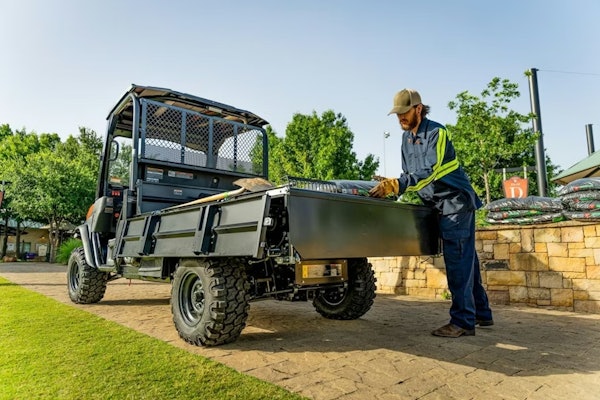As fuel and labor costs continue to soar, mowing techniques and reliable equipment are vital to competing in today’s commercial marketplace. Here are four handy tips to keep your business as pristine as the turf you mow.
Striping: Not just for ballparks any more
The beauty of the striped lawn is highly sought after by the “Do It For Me Crowd,” says Nick Cashier, vice president of commercial product marketing for Cub Cadet.
Cashier says this customer base not only wants grass cut level and clean, “but they like an alternating color pattern to highlight their well-manicured lawn. And obviously, they don’t want grass clippings strewn everywhere,” he adds.
Cub Cadet is boasting its new Select Cut System, which Cashier says is ideal for striping. It features an adaptable mowing deck that delivers a clean, high-quality cut regardless of terrain, grass type or weather condition.
But not everyone’s a fan of using rollers on lawns. Ray Garvey, marketing coordinator for Grasshopper, says rollers are not a particularly healthy application because airflow is so important to striping.
“On Grasshopper striping mowers, there’s a high degree of managed air flow under the mower deck and we also install composite polymer-type belting,” Garvey says. “Along with the air flow under the decks, the belting tends to gently brush and train the blades of grass to lie in one particular direction.”
Roller or no roller, what makes a stripe picturesque is warm sunlight reflecting off the grass blades. And landscapers must train the grass to get these beautiful light and dark reflections, says Edric Funk, product manager for Toro.
“It’s not uncommon to see guys alternating every other week in opposite directions at 90 degrees to one another,” Funk says. “When they come back, they’re going to go over things that they’ve already striped, to go down a path in the same direction they did the last time to further enhance the stripe.”
In addition to using a machine to get the striped look, Garvey recommends mulching. “Mulching forces the blades of grass downward using air flow and not some mechanical means, and thus trains the grass to lean in a particular direction,” he says.
Stand up for faster service
Funk says many landscapers love stand-on mowers because they can decrease labor requirements and time spent on a job.
“Because the stand-ons tend to be more maneuverable than ride-on mowers, in many cases, the search for a faster mowing platform might actually favor stand-on mowers,” he says. “With a stand-on, you’re pulling in and out of things, back and forth, getting into tight places, and not having to switch and use a second mower for finish work.”
Stay productive on wet ground
Garvey says the key to mowing a marshy area or ground that’s somewhat soft is using a well-balanced mower, one that leaves a light footprint. He also recommends higher flotation tires for wet jobs.
“Common industry turf tires work fine in flat mowing areas that drain well. But when you get into soft ground areas having a high floatation type of tire with tire pressures as low as 6 psi makes a huge difference in maneuvering,” Garvey says. “The unit tends to float over the wet ground as opposed to digging into the turf and bogging down.”
More power means more mowing
Funk says there’s a growing group of pros that have latched onto diesel-powered mowers and swear by them. Diesel engines respond to heavy loads better than regular gasoline because of their inherently high-power, low-end torque curve, he says. “Landscapers who face high growth conditions or cut really lush properties often favor diesel power.”
But the diesel phenomenon has been a topsy-turvy ride over the past decade. First, it was touted as a more cost-effective way to power mowers. Now, diesel prices are notably higher than gasoline.
“In most areas of the country, diesel’s still quite a premium, “Funk adds. “But contractors that run it say they save, because of the higher energy content diesel fuel has.”
As for the performance of diesel versus gasoline, Funk says the proof is in the grass mowed.







